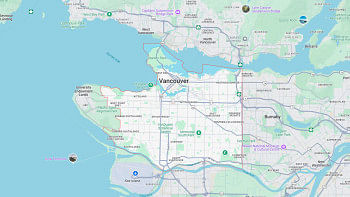Historic archaeological sites need to be preserved
Significant archaeological sites in the country such as Sonargoan and Panam Nagar need to be preserved for the benefit of next generations and to attract tourists.
“These historic sites are in risk of being lost due to lack of coordinated programmes to protect those," Abdullah Al Mamun, a former student of Islamic History and Culture department of Dhaka University, told UNB recently.
Mamun said Sonargoan as a historic place bears many symbols of archeological development of ancient Bengal and these should be protected by the authorities concerned for the next generation. “It's a place which can attract tourists from abroad too.”
Khadiza Akhter, a tourist from Dhaka, said the government should take immediate steps to provide transport facility, especially bus services up to the spot, so that people from capital Dhaka can visit the place comfortably.
“In absence of bus services, drivers of CNG-run three-wheelers are charging excess fares from tourists. And they hardly bother in harassing passengers,” she alleged, demanding security for the tourists.
When asked, Prof Dr Akhtaruzzaman, a teacher of Dhaka University's Islamic History and Culture department, said although some steps to protect Sonargoan archaeological sites have been taken by the government, it should give further attention to protect the old capital of Bengal.
Describing the historical importance of Sonargoan, Dr Akhtaruzzaman said a famous university was established there in the 14th century and many greatest scholars from across the world used to teach the students. “Among many historical events, there was a slave market there during the Muslim rulers.”
He said a planned city, Panam Nagar, was built there which is now in shabby condition. “We should protect these historical sites for the future generation.”
According to history, Sonargaon was the capital of eastern Bengal under the rulers of Shahi Sultan during the medieval age. It now survives as a township about 27 kilometers southeast of Dhaka but from the old remains it appears to encompass a wide tract bounded on the east, west and south by the Meghna, the Shitalakhya and the Dhaleshwari rivers respectively and on the north by the Brahmaputra.
With the annexation of the Muslim principality of Lakhnauti by Shamsuddin Firuz Shah in the 14th century, Sonargoan became the seat of an independent ruler under his son and successor Ghiyasuddin Bahadur Shah, and after the fall it became the headquarters of the eastern province of Bengal under Tughlaqs till 1338.
Sonargoan emerged as the capital of independent Sultanate under Fakhruddin Mubarak Shah (1338-1349) and his son Ikhtiyaruddin Ghazi Shah (1349-1352).
By the second quarter of the 14th century, Sonargaon developed into a commercial metropolis. Ibn Batuta describes Sonargaon as an important port city which had direct commercial relation with the countries like China, Indonesia, and the Maldives. Famous Muslin produced in Sonargaon, especially its finest variety called Khaza, had a worldwide reputation.
With the advent of Mughals and establishment of capital in Dhaka, Sonargoan is thought to have fallen fast into decay. In the late nineteenth and early twentieth centuries Panam Nagar was developed as part of the medieval Sonargoan. With the loss of political status in the second decade of 17th century, Sonargoan gradually lost its commercial importance as well.
The existing remains now are a few medieval buildings, mostly religious, belonging to the Sultanate and Mughal periods, some Mughal bridges, and a few residential buildings of the colonial periods. The other remains are Sultan Ghiyasuddin Azam Shah's tomb at Shah Chilapur, Panch Pir Dargah and a mosque at Bhagalpur, Sonakanda fort, Dewanbagh mosque at Dewanbagh.

 For all latest news, follow The Daily Star's Google News channel.
For all latest news, follow The Daily Star's Google News channel. 



Comments